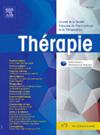儿童曲马多中毒:一个新出现的问题
IF 1.8
4区 医学
Q3 PHARMACOLOGY & PHARMACY
引用次数: 0
摘要
背景儿童使用曲马多会引起安全问题。在欧洲,根据国家不同,曲马多仍被批准和许可用于1-3岁的儿童。在此背景下,作者报告了一例曲马多用药过量病例,患者为一名5岁儿童,有同型镰状细胞病病史。结果入院时血液中曲马多和 M1 的定量分别为 5.48 和 1.32 μg/mL,12 小时后分别为 0.77 和 0.35 μg/mL,20 小时后分别为 0.32 和 0.18 μg/mL。该患者被预测为CYP2D6正常代谢者(*35/*29)。事实上,曲马多的药代动力学特性具有很大的变异性,这与以下因素有关:(i) 影响分布容积(Vd)的解剖/生理因素;(ii) CYP2D6 基因多态性。考虑这一问题对于预防中毒尤为重要。在报告的病例中,血浆消除半衰期估计为 6.3 小时,明显高于报告的 2-8 岁儿童的消除半衰期(约 3 小时)。这种差异似乎与基因多态性无关,而是与 Vd 有关。事实上,根据预测,该患者的 CYP2D6 代谢正常(*35/*29)。本文介绍的病例突出了儿童使用曲马多的相关风险,并强调了考虑该人群 PK 变异性的重要性。这种变异性要求在为儿童开具曲马多处方时更加谨慎,并强调了对接受这种止痛药治疗的儿童家属进行治疗教育的重要性。本文章由计算机程序翻译,如有差异,请以英文原文为准。
Tramadol intoxication in children: An emerging issue
Background
Prescribing tramadol in children raises safety concerns. In Europe, tramadol is still approved and licensed for use in children over 1–3 years of age, depending on the country. In this context, the authors report a case of a tramadol overdose in a 5-year-old-child with a medical history of homozygous sickle cell disease.
Methods
Tramadol and M1 were quantified using liquid chromatography with a diode array detection method. CYP2D6 genotype was determined using a next generation sequencing platform (MISeq, Illumina).
Results
Tramadol and M1 were quantified in blood respectively at 5.48 and 1.32 μg/mL at admission, at 0.77 and 0.35 μg/mL 12 hours later, and at 0.32 and 0.18 μg/mL 20 hours later. The patient was predicted as a CYP2D6 normal metabolizer (*35/*29).
Conclusion
One of the most important difficulties with the use of tramadol in children relates to its pharmacokinetic (PK) properties. Indeed, tramadol's PK is characterized by a great variability related to: (i) anatomical/physiological factors that impact the volume of distribution (Vd); (ii) CYP2D6 genetic polymorphisms. Considering such an issue is particularly relevant to prevent poisoning. In the reported case, the plasma elimination half-life was estimated at 6.3 h, significantly more than those reported in 2–8 year-old children (about 3 h). This discrepancy does not seem related to genetic polymorphisms but rather to the Vd. Indeed, the patient was predicted to be a CYP2D6 normal metabolizer (*35/*29). The case presented here highlights the risk associated with the tramadol use in children and emphasizes the importance of considering PK variability among this population. Such variability necessitates greater caution in prescribing tramadol in children and highlights the importance of therapeutic education for families of children treated with this painkiller.
求助全文
通过发布文献求助,成功后即可免费获取论文全文。
去求助
来源期刊

Therapie
医学-药学
CiteScore
3.50
自引率
7.70%
发文量
132
审稿时长
57 days
期刊介绍:
Thérapie is a peer-reviewed journal devoted to Clinical Pharmacology, Therapeutics, Pharmacokinetics, Pharmacovigilance, Addictovigilance, Social Pharmacology, Pharmacoepidemiology, Pharmacoeconomics and Evidence-Based-Medicine. Thérapie publishes in French or in English original articles, general reviews, letters to the editor reporting original findings, correspondence relating to articles or letters published in the Journal, short articles, editorials on up-to-date topics, Pharmacovigilance or Addictovigilance reports that follow the French "guidelines" concerning good practice in pharmacovigilance publications. The journal also publishes thematic issues on topical subject.
The journal is indexed in the main international data bases and notably in: Biosis Previews/Biological Abstracts, Embase/Excerpta Medica, Medline/Index Medicus, Science Citation Index.
 求助内容:
求助内容: 应助结果提醒方式:
应助结果提醒方式:


